Today I propose to move to the affordable stationary DAC segment and consider the recently released SMSL SU-6. The device is based on the repeatedly proven ESS ES9038Q2M converter, the XMOS XU208, which is also worthy of respect, is responsible for USB, and the bluetooth is equipped with a Qualcomm chip with support for AptX HD and LDAC codecs. All characteristics of the device are literally going wild: PCM and DSD have the highest possible resolution, and the measurements are simply fantastic. In appearance with such a baby, all this does not fit very well, but, as always, we will figure it out.

Characteristics
- DAC: ESS ES9038Q2M
- USB: XMOS XU208
- Bluetooth: 5.0, Qualcomm with AptX HD and LDAC
- Amplifiers: 4 x OPA1612A
- Audio resolution: up to 768kHz/32bit, DSD512
- Support for decoding formats: PCM, DSD
- Frequency range: 20 Hz – 40 kHz
- Inputs: bluetooth, optical, coaxial, USB
- Outputs: RCA
- Power supply: built-in power supply
- Dimensions: 140 x 105 x 28 mm
- Weight: 0.35 Kg.
- OS: Windows, MAC OS, Android, iOS
Packaging and equipment
The device came in a small cardboard box with a schematically depicted hero of the review, the address of the official website and the logo of the passed Hi-Res Audio certification.

In the kit we put a small instruction, a warranty card, a control panel, also a new sample, a bluetooth antenna, a white USB Type C cable and a power cord with a narrow plug. As you probably guessed, the power supply in this baby was also removed into the body of the device. And that deserves a standing ovation.

The remote control is made of nice matte plastic with rubberized buttons and is powered by two AAA batteries.

From the functionality, volume control, switching inputs, turning off the display and temporarily turning off the “mute” sound were taken out to it.
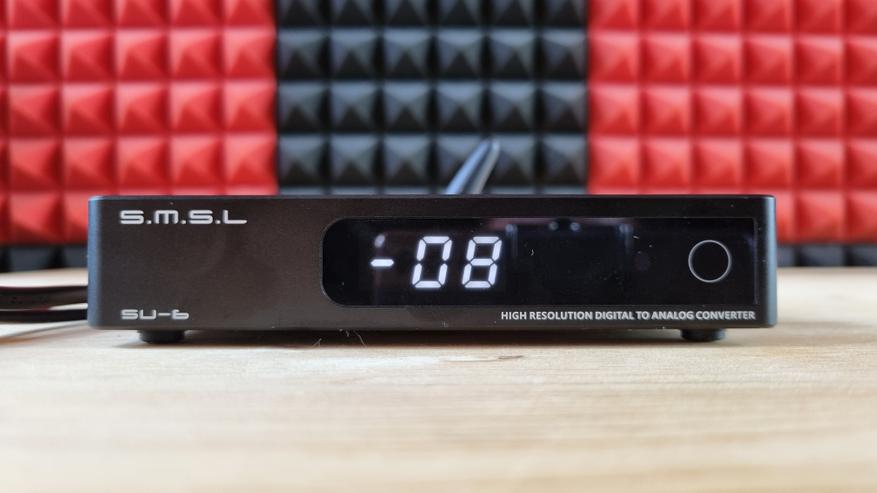
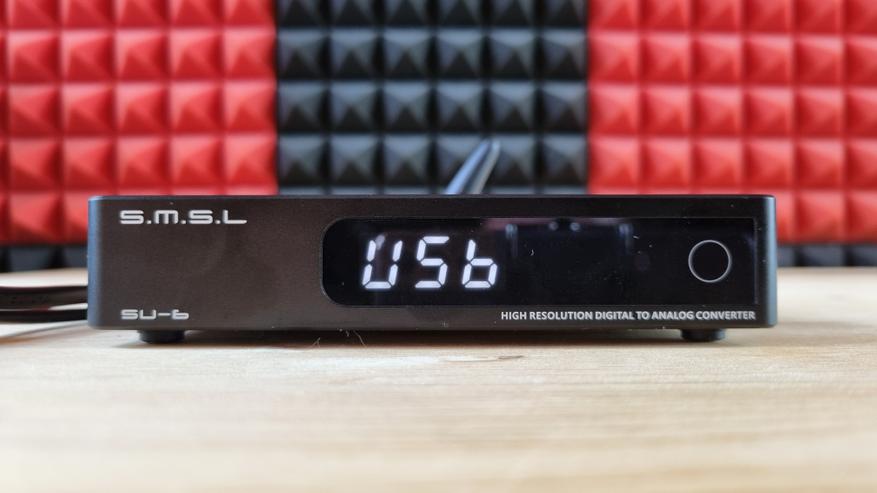

The block located on top allows you to enter the system menu, where you can select one of the seven filters built into the DAC, adjust the jitter and set the display brightness. Without a remote control, unfortunately, access to this menu is closed. Although these parameters are one of those that I once set and forgot.

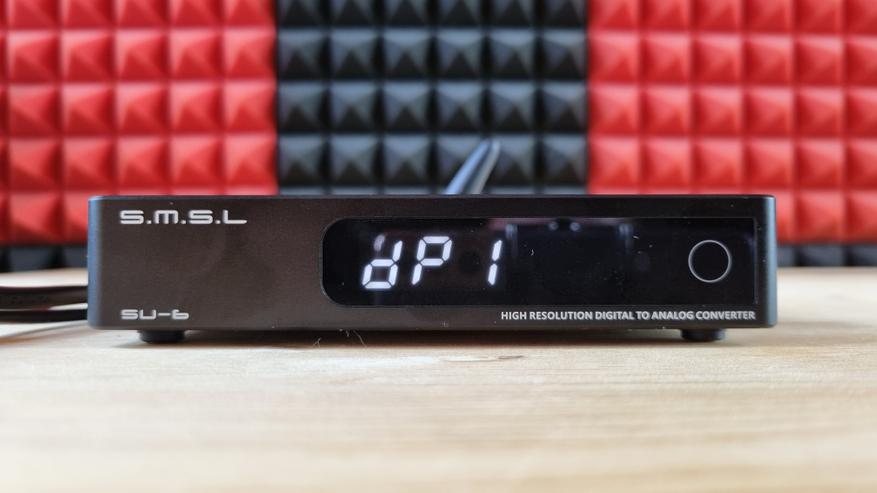

Design/Ergonomics
The DAC case is very similar to its older comrades, only about one and a half times smaller. In terms of materials, it is metal on all sides. It has the logo of the passed Hi-Res Audio certification on top, and on the bottom it stands securely on four rubberized legs.


From the inputs, we have access to bluetooth with AptX HD and LDAC codecs, coaxial, optics and USB on the Type C connector, and the output is exclusively RCA.

The front part here has a fairly bright display and a multi-functional touch button. A short touch of which switches the inputs, and a long touch turns off the device.

On the main screen, everything is just super obvious. Most of the time we have to admire the quality of the active signal. If you need to, for example, change the volume, then this characteristic appears and then disappears, again displaying the current frequency of the PCM or DSD stream. I think that’s why they introduced the button to turn it off.

During operation, the device practically does not heat up, looks great and does not take up any space at all. Of course, you can’t put it in your pocket, but taking it with you, say, to work is not a task at all.

It makes little sense to disassemble the hero of the review. It is known for certain that it is based on ESS ES9038Q2M with an amplifying part on OPA1612, XMOS XU208 is responsible for USB, only an incomprehensible chip is on bluetooth. But the bluetooth version, the manufacturer and the list of supported codecs are also known from it. All components today are far from top-end, but they are already well-proven.

To work, you need to connect a signal source to the DAC, I have it USB, and the output can immediately go to active monitors or, through an additional amplifier, to passive acoustics or headphones. You cannot connect headphones directly to the SU-6.
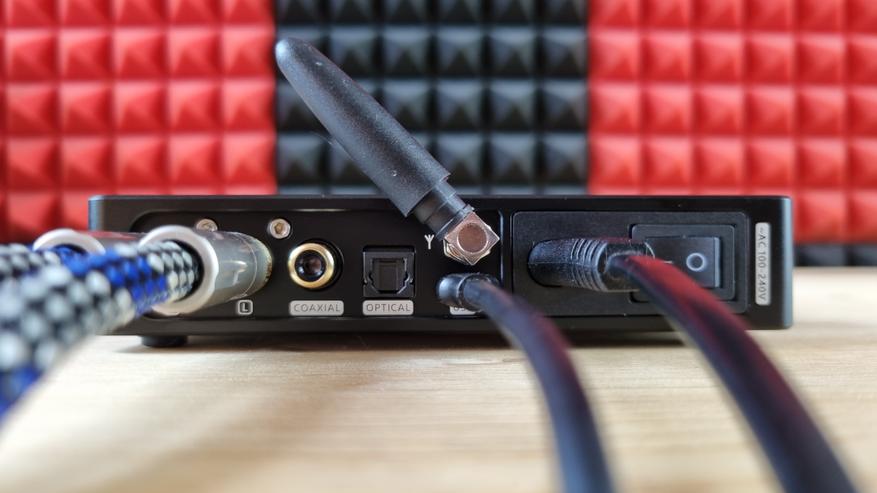
The DAC turns on automatically, select the active input from the menu or remote control and that’s it, we begin to enjoy listening to your favorite music. The level here can also be adjusted if necessary. Naturally, the device remembers all the parameters when the device is turned off, you do not need to set them every time.

Software
Under Windows 10, the device is automatically detected, ready for use via WASAPI.

To support older versions of the system and the ASIO interface from the official site, you need to install special drivers. There I recommend not to touch anything. Available formats are PCM up to 32 bit 768 kHz and DSD up to DSD512. MQA decoding is not supported by this device.


With a smartphone, the DAC works great with all applications and services, including through a specialized BitPerfect mode. Surprisingly, hardware volume control is also available in the SU-6. In stationary solutions, this is a rather rare guest.



There are no questions about bluetooth either: the most advanced codecs are at your service, including AptX HD and LDAC.



measurements
I took measurements in 24-bit 96 kHz using an E1DA Cosmos ADC.

As a result, all graphs are in the “excellent” position, except for the frequency response, which has a tolerance of 0.3 dB at 20 kHz.

Otherwise, just a record low noise level of minus 155 dB, a chic dynamic range and distortion below minus 125 dB, both intermodulation and harmonic.


The latter in percentage terms are 0.00011. Exactly as stated in the instruction manual. Almost perfect measurements, just like in top devices from reputable brands.
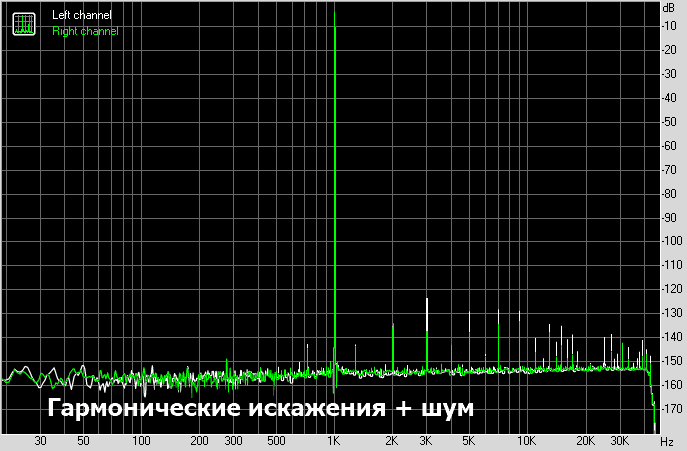

Sound
The sound of the DAC, of course, will greatly depend on your amplifier, but there are still common features in it. So, hooking it up to a much more expensive SMSL HO200 amp and paired it with a custom-built SH-6 gave me a character somewhere in the middle between what they do in their older units, SMSL and Topping. That is, the depth and space of the stage that we heard in the SU-8s and DO200 are also present here, but much less pronounced. And if on an expensive amplifier, the sound turned out to be voluminous and as natural as possible, then the SH-6 does not have such capabilities. Why the scene narrows in depth and everything sounds, as they say, at your own expense. Therefore, choosing an amplifying part for this baby, it would be a sound idea not to save.

At the same time, this slight digression into the drawing of space brings us a little closer to how Topping usually prepares its sound. That is, with a bias in clarity, technicality and great attention to nuances. So, everything is also available in SU-6, which means we get a kind of hybrid of two approaches that can satisfy a much wider range of taste preferences. Since here is the volume, with the correct mass and drawing the scene in depth, and a fairly detailed transfer of the musical canvas. No, this is far from being a titan killer, but there is something in it.

The sound is very pleasant to the ear, the bass is clear, deep, the middle is natural, slightly dried, but moderately massive and expressive, with excellent transmission of even small shades of sound production. At high frequencies, the mass seems even smaller, but they extend quite wide and are heard comfortably. I don’t see any significant restrictions in style, the model draws well like a good orchestra, good old rock or blues, and almost any electronics and metal. Waiting, of course, for crystal transparency or total immersion is pointless here. But, as for its price tag, yes, with a good amplifier, the device can really surprise you.

Returning to the SH-6 specially created for the hero of the review, the sound acquires a more collected character, the overall sharpness slightly increases, but at the same time the sound itself becomes simpler. It is, of course, silly to find fault with it, but it is advisable to make a bunch of these devices only taking into account the compact dimensions, separate power supply and the ability to get a power of 1300 mW for a 32 ohm load for an inexpensive price. Otherwise, the DAC itself deserves much better amplification.

Video version of the review
findings
Summing up, the stationary DAC SMSL SU-6 simply struck me with its literally microscopic dimensions, and the power supply also managed to be shoved into this tiny case. In terms of measurements, characteristics and the element base itself, everything is simply at the highest level. Technically, the device is, without a doubt, beautiful. They didn’t even stint on adding a bluetooth chip here with support for AptX HD and LDAC codecs, and they put the remote control like the tops.
Of the minuses, there is no MQA support and a balanced output. However, no one expects such frills from a proprietary DAC for $150.
I was personally very pleased with the sound of the SU-6, it is far from the thin sharp sound that we meet with competitors. The hero of the review is endowed with its own mass, is able to convey the volume and depth of the scene, as well as adequately draw all the necessary nuances. After various expensive models, it sounds, of course, not so impressive, but the level for your money was excellent, the main thing is to choose a good amplifier and decent acoustics for it. I highly recommend Solo. If we talk about a bunch with SH-6, then against the background of competitors, in my opinion, it looks weak.
SMSL SU-6 on Aliexpress SMSL SU-6 on the website
My other reviews, on audio topics and not only, can be found in my profile . And you can quickly find out about discounts, distribution of coupons, AliExpress promotional codes on my telegram channel – KVPokupok (the link to it is below). Check it out and join!




